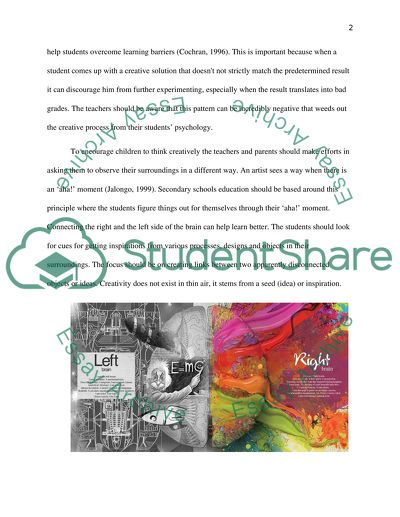Cite this document
(“Creativity in secondary school Essay Example | Topics and Well Written Essays - 1500 words”, n.d.)
Creativity in secondary school Essay Example | Topics and Well Written Essays - 1500 words. Retrieved from https://studentshare.org/education/1696971-creativity-in-secondary-school
Creativity in secondary school Essay Example | Topics and Well Written Essays - 1500 words. Retrieved from https://studentshare.org/education/1696971-creativity-in-secondary-school
(Creativity in Secondary School Essay Example | Topics and Well Written Essays - 1500 Words)
Creativity in Secondary School Essay Example | Topics and Well Written Essays - 1500 Words. https://studentshare.org/education/1696971-creativity-in-secondary-school.
Creativity in Secondary School Essay Example | Topics and Well Written Essays - 1500 Words. https://studentshare.org/education/1696971-creativity-in-secondary-school.
“Creativity in Secondary School Essay Example | Topics and Well Written Essays - 1500 Words”, n.d. https://studentshare.org/education/1696971-creativity-in-secondary-school.


